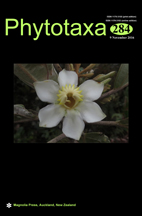Abstract
An unknown small naviculoid diatom was found in the epiphyton samples from Hungary (in Kanyari Holt-Tisza oxbow) and in the epilithon samples from France (Canal de Berry at Épineuil-le-Fleuriel). Detailed observations using light and scanning electron microscopy were used to describe Brevilinea kevei Ács & Ector sp. nov. It can be separated from Brevilinea pocosinensis Siver et al. (which was the only described species in the genus) by its size (smaller than B. pocosinensis), shape (elliptic valve, never capitate) and ecological requirements. Brevilinea pocosinensis lives in acidic conditions while B. kevei in neutral ones. Differential diagnostic criteria with respect to similar taxa, especially Fallacia indifferens (Hustedt) D.G. Mann, together with ecological implications of this finding are briefly discussed.

